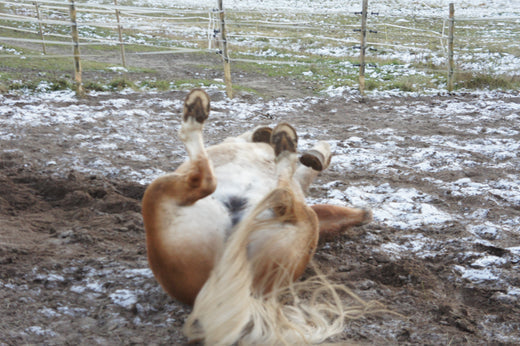
Recognize neuropathic pain in a horse
Neuropathic pain arising from nerve damage is one of the three pain mechanisms. It is caused by injuries
and inflammations affecting the nervous system. These can be, for example, the spinal cord being compressed when the spine is damaged, the nerves of the cervical spine being damaged due to an injury or an abscess, or the nerve of a limb being severed because of an injury. Sometimes, nerves are also damaged during a disease. For example, changes in the peripheral nerves of the lower part of the leg have been found in horses suffering from laminitis. Similarly, osteoarthritis can be associated with damage to the nerves innervating the joint.
Pain caused by nerve damage is challenging to identify and assess in animals, as it can manifest in many ways. Pain is always an individual experience that is affected by many different things in the animal and its environment. Pain symptoms are very patient-specific and are particularly variable in the case of neuropathic pain.
We cannot ask the horse what the pain feels like and how intense it is. In people experiencing neuropathic pain, the pain can be an electric shock-like throbbing pain, the intensity of which can vary from mild throbbing to unbearably severe pain. Neuropathic pain can be constant, with no external stimulus needed for its occurrence. Alternatively, the pain comes in intervals. For example, in human patients suffering from complications from shingles, a light and moving stimulus on the skin can cause pain. Similarly, trigeminal neuralgia in people can be triggered by, for example, cold wind on the skin of the face. In horses, very similar symptoms have been described in patients suffering from uncontrollable head shaking.
Neuropathic pain significantly impacts the horse's behavior and performance. For instance, pain in the back and neck can lead to the horse resisting handling, grooming, saddling, mounting, or riding. The horse may tense its muscles and limp, making it difficult to perform tasks. Moreover, during exercise, the pain can worsen, making it dangerous to ride or drive the horse. The horse may try to escape, stand up, back up, or even fall to alleviate sudden severe pain attacks.
Horses suffering from neuropathic pain often exhibit heightened sensitivity to pain. They may react strongly to procedures like vaccination. The most severe form of pain sensitization, allodynia, can cause the horse to experience normally painless stimuli, such as touch, as painful. For instance, many horses with neuropathic pain experience intense pain when a certain area on their skin is touched. This heightened sensitivity can also reduce cold tolerance, making seemingly harmless stimuli like a cold ice pack feel unbearable.
Nor can we ask the horse what other sensations are associated with pain. Human patients suffering from neuropathic pain often describe not only pain but also other abnormal sensations, such as sensory deficits, numbness, tingling, or itching. For example, patients can describe that in a limb with neuropathic pain, it feels like ants were walking on the skin. Sometimes the unpleasant sensations are so intense that they impair the patient's well-being as much or even more than the pain itself. Sensory deficits can also cause various problems, such as clumsiness and injuries. Muscle weakness may also occur. Muscle cramps are quite common, causing muscle pain. The sense of position of the affected limb may also be impaired. If it continues for a long time, neuropathic pain is often also accompanied by nociplastic pain. In particular, it causes sleep difficulties and negative emotional states, which then, in turn, intensify the horse's experience of pain.
